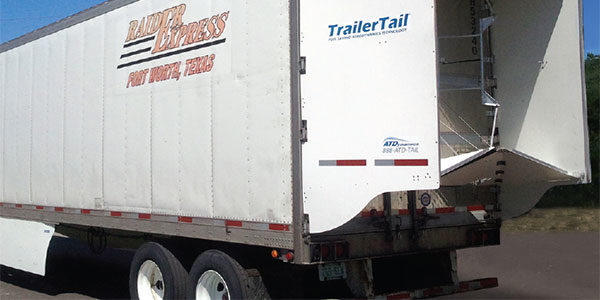Research confirms truck-trailer attachments boost fuel efficiency

While driving on a highway recently, a truck trailer with an oddly shaped back end caught our eye. We pulled alongside to check it out and saw an extension attached to the back of the trailer that looked like the top of a cardboard box with its flaps partially folded inward. It was a "TrailerTail," a patented device developed by ATDynamics that reduces low-pressure suction drag directly behind the trailer. According to the manufacturer, the attachment increases fuel efficiency by an average of 6.6 percent at 65 mph. When the device is paired with trailer "skirts" or "wings" that hang below the vehicle's sides, fuel savings can reach 10 percent.
The fuel savings from aerodynamic attachments are substantial, according to FPInnovations' Performance Innovation Transport (PIT), a nonprofit engineering and research group that serves the North American trucking industry. The Montreal-based organization has been conducting tests on trailers equipped with side skirts and undercarriage aerodynamic devices for five years. In its most recent tests, PIT found that trailers with side skirts consumed 6.69 percent less fuel on average than similar vehicles without skirts. Trailers with undercarriage aerodynamic devices consumed 1.43 percent less fuel on average than similar units without the deflectors, PIT said.
For more information about the tests, visit pit.fpinnovations.ca.
Related Articles
Copyright ©2024. All Rights ReservedDesign, CMS, Hosting & Web Development :: ePublishing